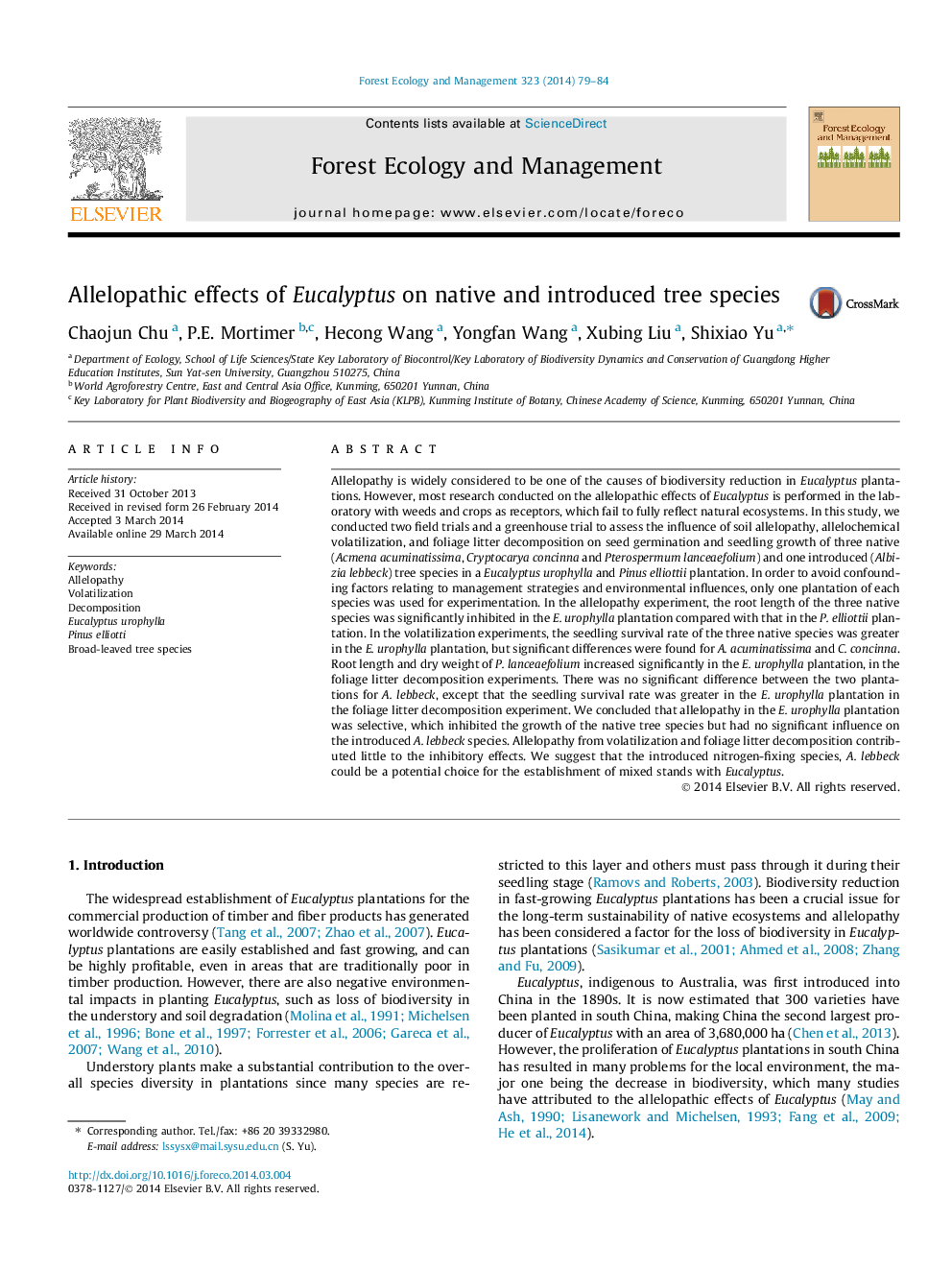| کد مقاله | کد نشریه | سال انتشار | مقاله انگلیسی | نسخه تمام متن |
|---|---|---|---|---|
| 86687 | 159206 | 2014 | 6 صفحه PDF | دانلود رایگان |
• Field and greenhouse trials were conducted to assess the allelopathic effects of Eucalyptus.
• The effects derived from various mechanisms of allelopathic chemical release were detected.
• Allelopathy in the E. urophylla plantation was selective.
• The introduced tree species, Albizia lebbeck, can be planted in the Eucalyptus plantation.
Allelopathy is widely considered to be one of the causes of biodiversity reduction in Eucalyptus plantations. However, most research conducted on the allelopathic effects of Eucalyptus is performed in the laboratory with weeds and crops as receptors, which fail to fully reflect natural ecosystems. In this study, we conducted two field trials and a greenhouse trial to assess the influence of soil allelopathy, allelochemical volatilization, and foliage litter decomposition on seed germination and seedling growth of three native (Acmena acuminatissima, Cryptocarya concinna and Pterospermum lanceaefolium) and one introduced (Albizia lebbeck) tree species in a Eucalyptus urophylla and Pinus elliottii plantation. In order to avoid confounding factors relating to management strategies and environmental influences, only one plantation of each species was used for experimentation. In the allelopathy experiment, the root length of the three native species was significantly inhibited in the E. urophylla plantation compared with that in the P. elliottii plantation. In the volatilization experiments, the seedling survival rate of the three native species was greater in the E. urophylla plantation, but significant differences were found for A. acuminatissima and C. concinna. Root length and dry weight of P. lanceaefolium increased significantly in the E. urophylla plantation, in the foliage litter decomposition experiments. There was no significant difference between the two plantations for A. lebbeck, except that the seedling survival rate was greater in the E. urophylla plantation in the foliage litter decomposition experiment. We concluded that allelopathy in the E. urophylla plantation was selective, which inhibited the growth of the native tree species but had no significant influence on the introduced A. lebbeck species. Allelopathy from volatilization and foliage litter decomposition contributed little to the inhibitory effects. We suggest that the introduced nitrogen-fixing species, A. lebbeck could be a potential choice for the establishment of mixed stands with Eucalyptus.
Journal: Forest Ecology and Management - Volume 323, 1 July 2014, Pages 79–84
